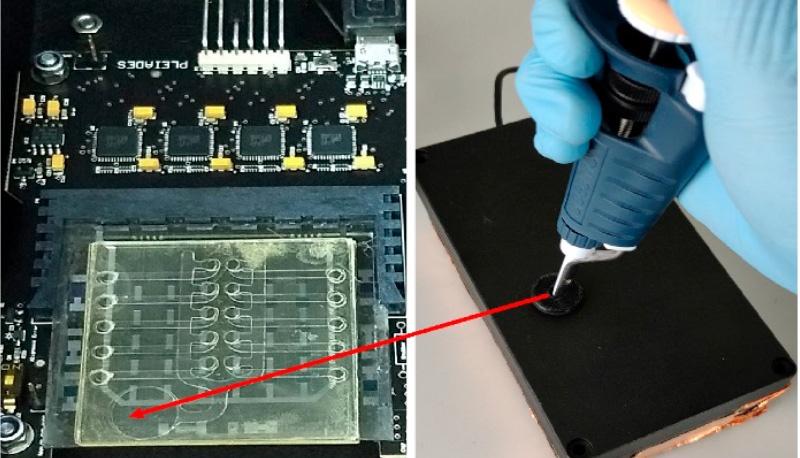Strengthening of the Italian Research Infrastructure for Metrology and Open Access Data in support to the Agrifood
UNIRM2 – Smart sensors and devices
(Reference person: Domenico Caputo)
The OU operates within the Department of Information Engineering, Electronics and Telecommunications (DIET) and the Department of Chemistry (CHEM). The OU involves engineers having deep expertise in development of portable lab-on-chip systems for biomolecular analysis, based on thin film electronic devices and actuators and with chemists with long-term expertise in spectroscopic characterisation of food and biological matrices, chemometrics and artificial intelligence. The development of these systems relies on the scientific knowledge of the involved people and on the facilities already present in the DIET and CHEM.
In DIET, these facilities include three main laboratories: a fully equipped microelectronic technological laboratory; an optoelectronic characterisation laboratory; a design laboratory for the design of electronic devices and circuits and fabrication of electronic circuits. On the other hand, CHEM hosts the NMLab - NMR-based Metabolomics Laboratory, which is part of the Research Infrastructure of Sapienza University (SRI) and is an integrated system of equipment and knowledge mainly dedicated to metabolomic analysis. Its core center is the JNM-ECZ 600R high resolution NMR spectrometer.

Domenico Caputo
Is Head of two labs in the Department of Information Engineering, Electronics and Telecommunications: the “aSiDaS Design” includes PCs equipped with commercial and custom-made software for designing thin film electronic devices and actuators and circuits for lab-on-chip application, while the “aSiDaS Characterization” includes state-of-the-art instrumentation, for measuring low currents (below 100fA) and spectral response, interfaced with a PC acquisition system.

Federico Marini
(Department of Chemistry) is full professor of Analytical Chemistry. His research work is mainly focused on all the different aspects of chemometrics, particularly with regard to both the development of new methods and algorithms and the application of models to solve real problems. Special attention is paid to the possibility of coupling between different instrumental analytical techniques and appropriate chemometric tools for the development of innovative methods of analysis. In parallel, omics studies are also carried out through the chemometric processing of data coming from different platforms. Another relevant aspect is the development of novel chemometrics methods, where particular interest has been directed to non-linear approaches, the analysis of multivariate data coming from designed experiments, the analysis of microscopic and/or hyperspectral images and the possibility of integrating/fusing multiple data matrices through multi-block modeling. He is vice-president of Italian NIR society and the coordinator of the Chemometric study group of EUCheMS.

Giovanni Organtini
Is Associate Professor of Experimental Physics at the physics department of Sapienza Università di Roma, and member of the CMS collaboration at the CERN’s LHC, and PADME at the Frascati National Laboratories. Among his more than 1.000 publications, the discovery of the Higgs boson was made possible thanks to the exceptional performance of the experiment's e.m. calorimeter, to the design and construction of which he contributed significantly. Thanks to the experience gained during the direction of its construction, today he is recognized as one of the world's leading experts in the use of digital technologies like Arduino and smartphones for obtaining physical data. His expertise in the field will enable the creation of cost-effective and user-friendly tools for use in the field and in the food processing industry, but also as educational tools.






